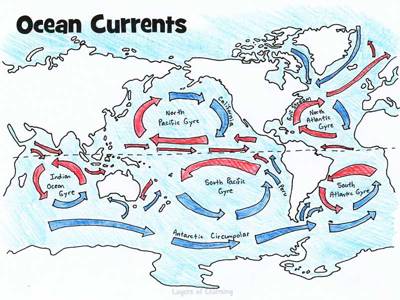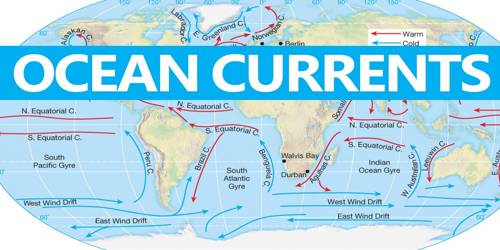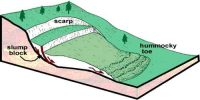Types of Ocean Currents
Ocean currents are like river flow in oceans. They represent a regular volume of water in a definite path and direction. It flows for great distances, and together, create the global conveyor belt which plays a dominant role in determining the climate of many of the Earth’s regions. The ocean currents may be classified based on their depth as surface currents and deep water currents;
(i) surface currents constitute about 10 percent of all the water in the ocean, these waters are the upper 400 m of the ocean. These currents move because of solar heating and wind. Solar heating causes water to expand. In the middle latitudes by the equator, water sits about eight centimeters higher than the rest of the water, which causes a slope that water can flow down, creating currents.
(ii) Deep water currents make up the other 90 percent of the ocean water. These waters move around the ocean basins due to variations in the density and gravity. Deep waters sink into the deep ocean basins at high latitudes, where the temperatures are cold enough to cause the density to increase. The higher the salt content of water, the denser it is. Dense water is heavier than less dense water and thus will sink because of gravity.

Ocean currents can also be classified based on temperature; as cold currents and warm currents:
(i) cold currents bring cold water into warm water areas. These currents are usually found on the west coast of the continents in the low and middle latitudes (true in both hemispheres) and on the east coast in the higher latitudes in the Northern Hemisphere.
(ii) warm currents bring warm water into cold water areas and are usually observed on the east coast of continents in the low and middle latitudes (true in both hemispheres). In the northern hemisphere, they are found on the west coasts of continents in high latitudes.
















